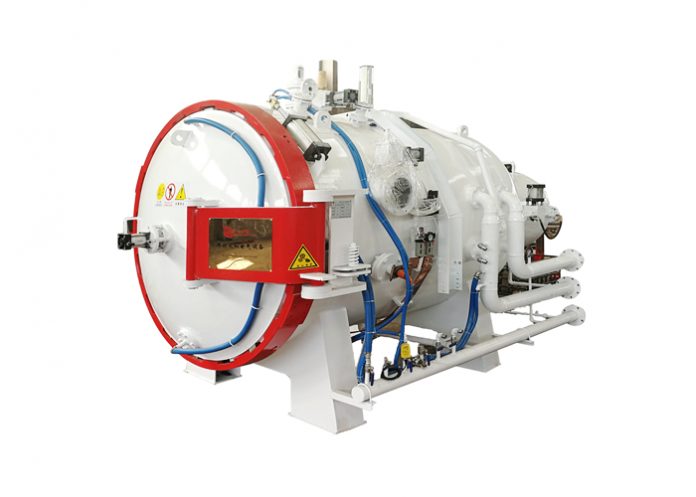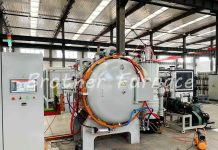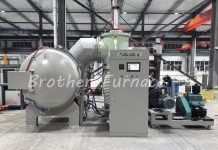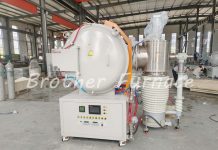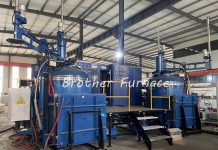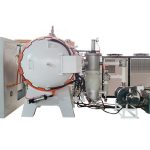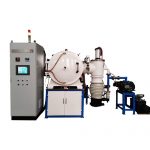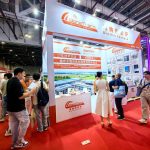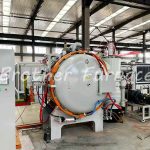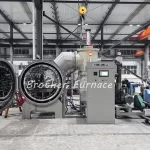In the previous article: Vacuum Heat Treatment (I), we detailed what is vacuum heat treatment, the characteristics of vacuum heat treatment, and the selection of vacuum level. In Vacuum Heat Treatment (II), we shared the selection of vacuum heating temperature and the selection of holding time.
Today, we continue to bring you the vacuum heat treatment (III): vacuum quenching and pre-cooling, and the choice of vacuum quenching oil surface pressure, hope it can help you.
Vacuum quenching pre-cooling
In quenching, we have to consider the material, shape, technical requirements of the heat-treated workpiece, as well as the material “C” curve to choose a reasonable quenching cooling speed. Generally, vacuum quenching is divided into vacuum oil quenching and vacuum gas quenching, today we mainly talk about vacuum oil quenching. Pre-cooling before quenching is very important.
Pre-cooling before quenching has a certain relationship with the size of the deformation. If quenched directly without pre-cooling, the internal stress of the workpiece is mainly thermal stress, the size of the workpiece may be reduced.
If pre-cooling at first and then quenched, the internal stress of the workpiece is mainly tissue stress, the workpiece is likely to expand.
We can only reduce the deformation of the workpiece if the workpiece is reasonably pre-cooled so that the thermal and tissue stresses inside the workpiece are relatively balanced. Generally, the pre-cooling time depends on the volume of the furnace and the size of the workpiece. If the size of the workpiece is 20~60mm, and the time is almost 0.5~3 minutes.
Pre-cooling is another reason for the workpiece surface carbonization white layer phenomenon. When doing the vacuum oil quenching, due to the thermal decomposition of quenching oil at high temperatures to form active carbon, infiltration into the surface of the workpiece, so that the surface of the workpiece will form a carbon layer.
This phenomenon is related to the high temperature, and the length of holding time is not relevant. High-speed steel vacuum oil quenching may also be formed on the surface of the 30-50um white layer (white layer is composed of a large number of composite carbide, martensite, and residual austenite).
Because of the internal junction with the coarse crystalline martensite, the surface hardness value is low, for high-speed steel, it will make the steel is not hard enough, easy to blunt. The higher the temperature of quenching oil, the thicker the white layer formed. So high-carbon high-alloy steel in the vacuum oil quenching, because of its hardenability is very good, it is best to use pre-cooling to reduce the above two conditions.
The choice of vacuum quenching oil surface pressure
At present, the vacuum quenching oil on the market, although it has a low saturation vapor pressure (will not contaminate the vacuum system), low critical pressure (and atmospheric pressure has a comparable quenching and cooling capacity of the minimum air pressure), good chemical stability, high surface brightness after quenching, low acid value and other characteristics, but in the case of vacuum and low pressure, the quenching oil cooling capacity will be relatively lower. The quenchability of vacuum oil quenching is only about 75% of that of normal oil quenching under normal pressure, and sometimes it may not reach full quenching.
- For some materials with poor hardenability, before quenching such materials, the cooling chamber should be filled with 1×104~5×104 Pa, high purity (99.999%) nitrogen to form a certain air pressure on the oil surface to make the vapor film stage of the cooling process thinner and shorter to achieve full quenching.
- For materials with relatively medium hardenability, the oil surface pressure should be controlled at 5×103~1×104 Pa.
- For materials with good hardenability, you can choose to inflate or not to inflate, if you inflate, you can inflate first and then fill the oil (oil surface pressure is controlled at 2.5×104~5×104 Pa). Or the oil can be injected first and then inflated, and the purity of the gas can be relatively low (99.8%~99.99%) for the post-inflation method, which can relatively reduce the cost.
In the oil surface pressure regulation basically to prevent and reduce the quenching of the oil vapor into the heating chamber and cause pollution, so it is best to use higher pressure, even if the hardening of the material is very good, it is best to fill some inert gas.
Finally, the vacuum heat treatment workpieces should be cleaned before loading the furnace and require an orderly arrangement. If there is a big difference in diameter or thickness, large workpieces must be placed at the edge and small workpieces inside, so as to achieve uniform heating of each part as much as possible.
Check out our Vacuum Quenching Furnace in details
Vacuum Heat Treatment (1): what is vacuum heat treatment, the feature, how to choose…
Vacuum Heat Treatment (2): How to choose the vacuum heating temperature and heating time?

